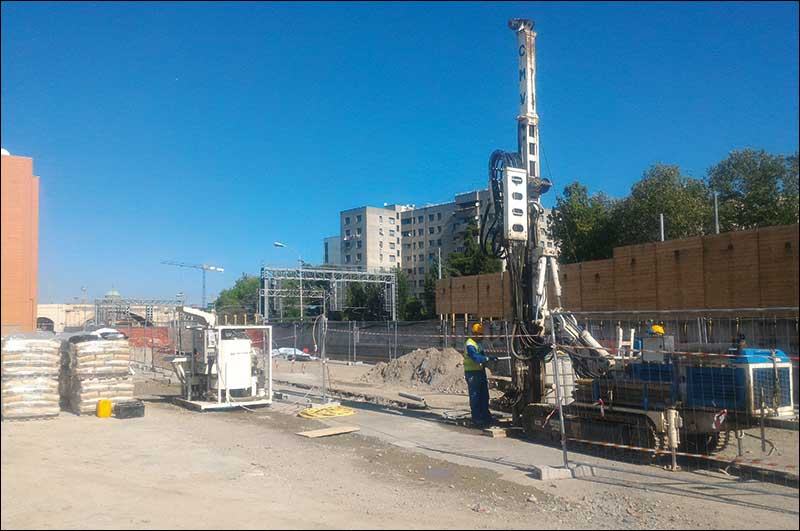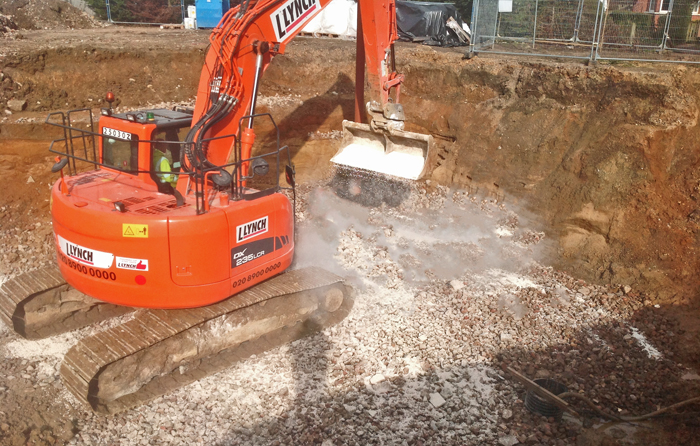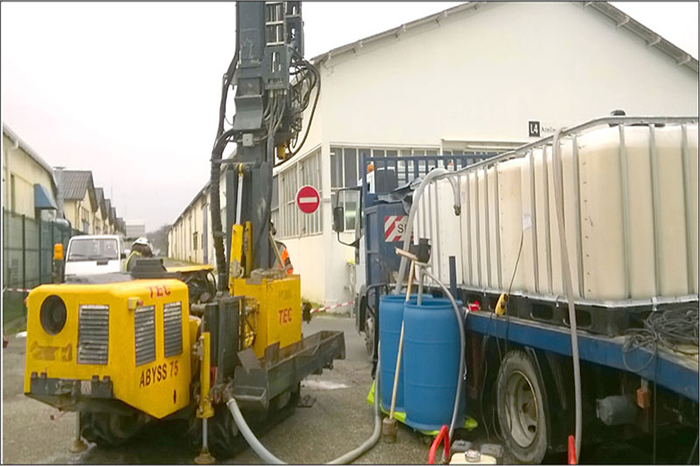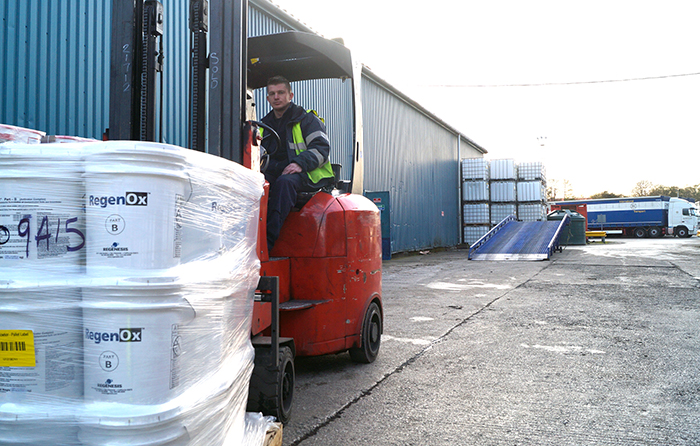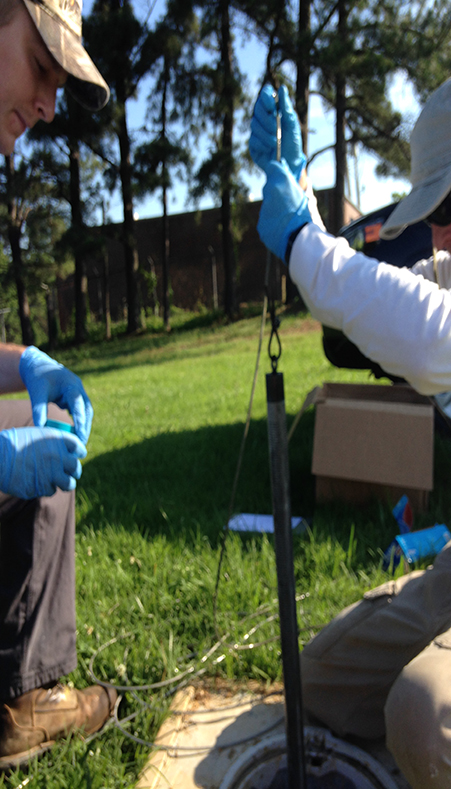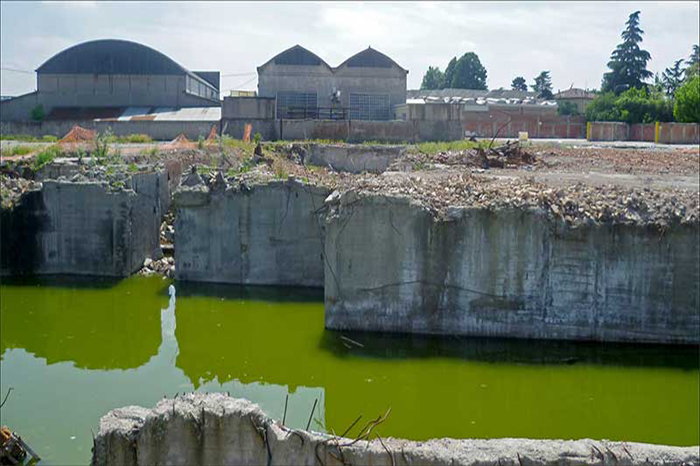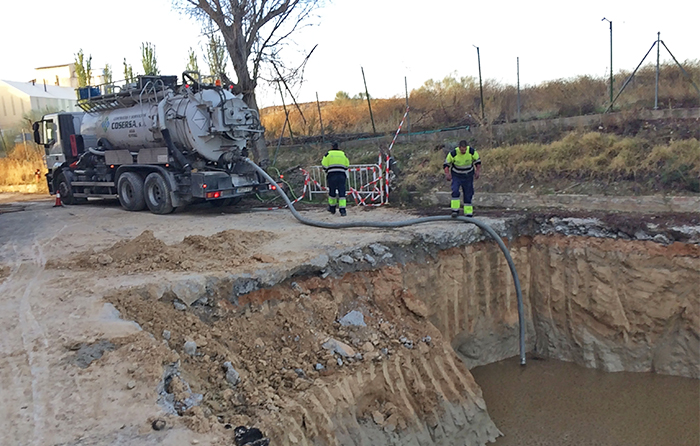Plume Treatment Under a Former Gas Works Site in Italy
A former gasworks site undergoing redevelopment was found to be contaminated with TPH, PAH and BTEX in the shallow formations.Read More
Integrated Remediation of a Petrol Filling Station, Middlesex, UK
Integrated remediation of a former petrol station using enhanced pump and treat, excavation application and barrier injection.Read More
In-Situ Bioremediation at a French Airport in Southwest France
Successful standalone treatment of a large plume with difficult site conditions. With a longevity of minimum 4 – 5 years, 3DMe was selected to remediate the site from a single application. This removed the need for further application on this busy factory site.
and allowed the contamination within the overlying clay layer to be addressed, avoiding a rebound due to back-diffusion.Read More
Remediation of Chlorinated Hydrocarbons at Manufacturing Facility, UK
AECOM successfully applied a phased treatment train solution for chlorinated solvents under an operational manufacturing facility. After an initial Dual Phase Extraction (DPE) phase, REGENESIS and AECOM devised a remedial design based on the updated Conceptual Site Model including In Situ Chemical Oxidation (ISCO) using RegenOx®, and Enhanced Reductive Dechlorination (ERD) using HRC®, to treat the residual contamination in groundwater.
Read More
HRC Barrier Applied Successfully Reduces TCE Levels to Non-Detect in Fractured Bedrock Site
Project Highlights
- Based on successful pilot test results, full-scale implementation of HRC barrier was applied
- TCE levels reduced by 99% within one year & at non-detect levels within 18 months
- Innovative design was effective in addressing contaminants of concern
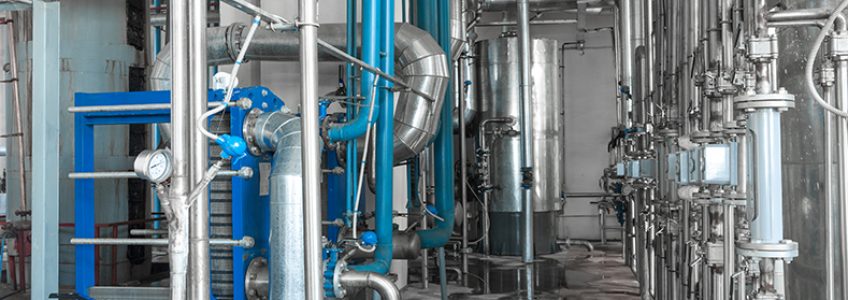
Project Summary
At a manufacturing facility in Virginia, HRC® was injected into a crystalline bedrock aquifer contaminated with TCE and its daughter products. The industrial site had been in operation for over 30 years. Groundwater flow was controlled by fractures in the crystalline rock with little to no permeability present beyond these fractures. Contamination levels had reached a high of 220 ppb of TCE. REGENESIS® recommended an HRC pilot test in conjunction along with excavation of the impacted geology.
The design using an HRC barrier focused on reducing TCE concentrations within a bedrock formation. Injection of HRC was accomplished using a single and double packer array and an appropriate delivery pump. The packer application method allowed HRC to be focused on the fractures controlling groundwater flow. A single packer system was used to apply HRC to the lower fracture (32 ft. bags) and a double packer system was used to apply HRC to the upper fracture zone (22-28 ft. bags). HRC was effectively injected at volumes ranging from 120-160 pounds per injection well.
Technology Description
HRC® is an engineered, hydrogen release compound designed specifically for enhanced, in situ anaerobic bioremediation of chlorinated compounds in groundwater or highly saturated soils.
Results
Over a period of less than a year, TCE concentrations decreased from 220 ug/L to 3 ug/L (a 99% reduction) and within 18 months, were at non-detect levels. Over the same period, concentrations of daughter products DCE and VC initially increased as expected (due to sequential reductive de-chlorination) but then subsequently decreased. In addition, concentrations of the de-chlorination end product, ethene, increased by 10x during the same time frame. The pilot test resulted in favorable results and continued through full-scale implementation. HRC’s proven effectiveness at treating chlorinated solvents within the fractured bedrock system and its significant cost advantage over all other technologies allowed the environmental firm to select HRC for their full-scale implementation resulting in reducing concentrations to non-detect and meeting site goals.
Back Diffusion of VOCs from a Fractured Sandstone Aquifer Treated at Former Industrial Facility
Project Highlights
Large-scale pilot tests confirm management of chlorinated VOC back diffusion from fractured bedrock aquifer
- Tests concluded degradation along biotic and abiotic reductive pathways
- Advanced sorbent technology extends treatment longevity to manage to manage long-term back diffusion
2m 20s reading time
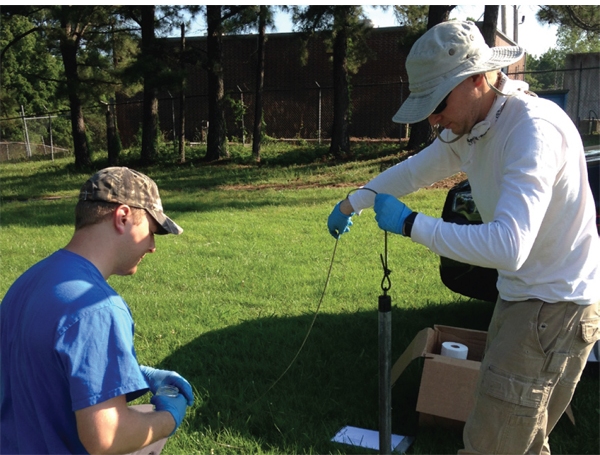
Project Summary
Fractured bedrock aquifers can be extremely heterogeneous which not only results in complex dissolved plume behavior, but can also hinder in situ remediation efforts that rely on an injection of amendments to promote microbial activity and abiotic degradation. However, due to the potentially high cost of a pump and treat remedy at a former industrial site in Arkansas, WSP determined that an in situ pilot test with advanced substrates was warranted.
At the Arkansas site, a 2016 pilot study was conducted using a multifunctional amendment formulation. REGENESIS® 3D-Microemulsion®, BDI Plus®, and CRS® were injected to remediate affected groundwater within a fractured sandstone bedrock aquifer impacted by chlorinated solvents. The contaminants at the site included trichloroethene (TCE), 1,1,1-trichloroethane (TCA), and degradation products. The plume on site underlies several developed properties and threatens a stream located approximately 1,500 feet from the source area. Results of the first pilot study yielded an 82% reduction within 9 months was measured approximately 80 feet from the application location.
A second pilot study was undertaken in 2017 to emplace a sorbent technology with long-lasting treatment capacity (PlumeStop®) on bedrock fracture faces to manage back diffusion from the bedrock primary porosity. This test also included the addition of bioremediation amendments to permanently degrade the sorbed contaminants. The 2017 treatment included PlumeStop and bioremediation amendments. After only one month, an 81% reduction was achieved in samples located 50 feet downgradient.
Preliminary indications of these amendment formulation tests are extremely promising in treating contaminant back diffusion emanating from the fractured bedrock matrix in this aquifer. WSP is confident that favorable performance monitoring results will continue and the full-scale remedy for this complex geologic setting will include REGENESIS products that extend treatment longevity.
Technology Description
PlumeStop® is an innovative groundwater remediation technology designed to address the challenges of excessive time and end-point uncertainty in groundwater remediation.
3-D Microemulsion® is an engineered electron donor material that offers a novel three-stage electron donor release profile, pH neutral chemistry, and is delivered on-site as a factory emulsified product.
HRC® is an engineered, hydrogen release compound designed specifically for enhanced, in situ anaerobic bioremediation of chlorinated compounds in groundwater or highly saturated soils.
BDI Plus® is designed for use at sites where chlorinated contaminants are present and unable to be completely biodegraded via the existing microbial communities.
CRS® is a liquid iron-based reagent for the enhanced biogeochemical in situ chemical reduction (ISCR) of chlorinated contaminants.
Treatment of a Diverse Range of Contaminants, Emilia Romagna, Italy
Treatment of a very low permeability geology with mixed contaminants at varying concentrations, using multiple application methods and a range of different REGENESIS products.Read More
Smear Zone Treatment at Former Factory in Madrid, Spain
At a former chemical works near Madrid, high soil and groundwater contamination had been observed at, and just below, groundwater level. In Situ Chemical Oxidation (ISCO) using RegenOx, was applied to target these and to avoid excavation into the saturated zone.Read More
Successful Pilot Test at Former Dry Cleaner Site with Restricted Access
Double pilot test with PlumeStop and 3DMe on an urban contaminated site with restricted accessRead More
Former Dry Cleaning Site Makes Way for Community Hospital Following Successful Treatment Using a Combined Remedy Approach
cVOC Contaminants Reduced by 97% After Two Months
Project Highlights
- Two months’ post injection results show contaminants were reduced by 97%
- Combined remediation approach used to successfully keep project on budget and on schedule
- Remediation design and amendments applied provided speed and certainty allowing for project to move forward
1m 55s reading time
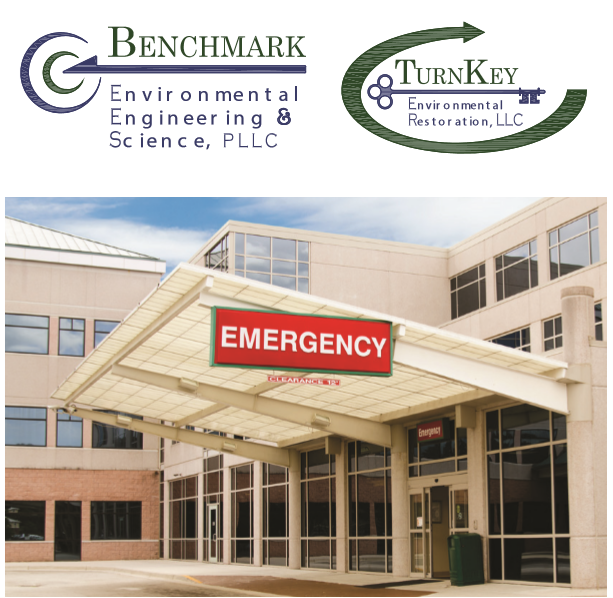
Project Summary
A former dry cleaning site in Western New York was targeted for redevelopment to make way for a multidisciplinary, world-class cancer center. Before redevelopment could get underway, the developer needed to address the cVOC levels found on site which exceeded state regulatory standards. The developer engaged Benchmark/Turnkey, a leading environmental firm in the Northeast, to develop a solution to address the contaminant levels found. Benchmark/Turnkey worked with REGENESIS® to design a remedial strategy that included 3D-Microemulsion®, Bio Dechlor Inoculum® Plus, and Chemical Reducing Solution® to reduce the PCE, DCE and TCE contaminants. The design focused on speed and certainty, since the site was tagged for immediate redevelopment. Using a direct push application of the amendments, Benchmark/Turnkey was successful in applying the combined remedial approach on budget and on schedule.
Technology Description
3-D Microemulsion is an engineered electron donor material that offers a novel three-stage electron donor release profile, pH neutral chemistry, and is delivered on-site as a factory emulsified product.
Bio Dechlor Inoculum Plus (BDI-Plus) is an enriched natural microbial consortium species of Dehalococcoides sp. (DHC). This microbial consortium has been enriched to increase its ability to rapidly dechlorinate contaminants during in situ bioremediation processes.
Chemical Reducing Solution is an iron-based amendment for in situ chemical reduction (ISCR) of halogenated hydrocarbon contaminants such as chlorinated ethenes and ethanes.
Results
Following the injection event, the team monitored the results and at two months found that total cVOC contaminant levels had been reduced by 97%. Based on the progress to date and the concentration of contaminants versus nutrients remaining in the groundwater, Benchmark/Turnkey expects to collect groundwater samples for two intervening semi-annual events then petition the New York Department of Environmental Conservation to discontinue groundwater monitoring.
About the Client
Benchmark Environmental Engineering & Science, PLLC is a licensed professional engineering company that provides comprehensive civil and environmental engineering services. TurnKey Environmental Restoration, LLC is a “sister” company that provides site investigation, remediation and infrastructure construction, and environmental and site management service.
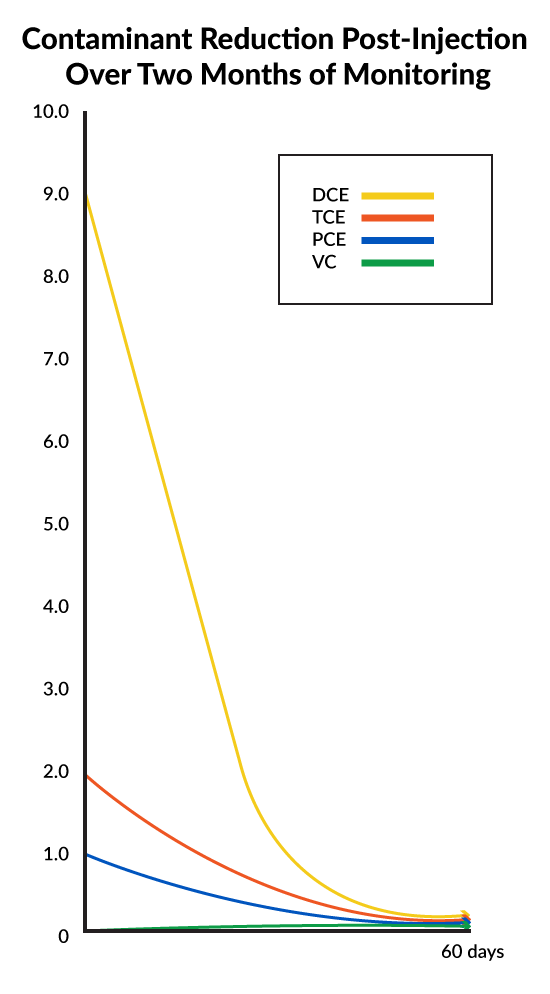

 Americas
Americas Europe
Europe Français
Français Deutsch
Deutsch Italiano
Italiano Español
Español